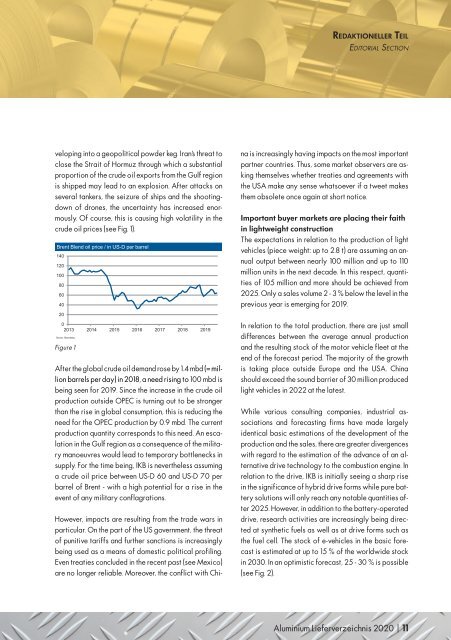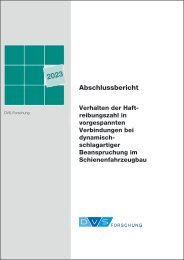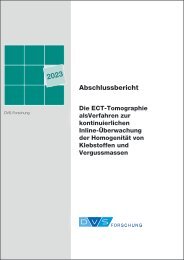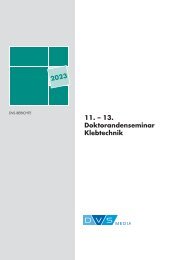You also want an ePaper? Increase the reach of your titles
YUMPU automatically turns print PDFs into web optimized ePapers that Google loves.
REDAKTIONELLER TEIL<br />
EDITORIAL SECTION<br />
veloping into a geopolitical powder keg. Iran’s threat to<br />
close the Strait of Hormuz through which a substantial<br />
proportion of the crude oil exports from the Gulf region<br />
is shipped may lead to an explosion. After attacks on<br />
several tankers, the seizure of ships and the shootingdown<br />
of drones, the uncertainty has increased enormously.<br />
Of course, this is causing high volatility in the<br />
crude oil prices (see Fig. 1).<br />
Brent Blend oil price / in US-D per barrel<br />
140<br />
120<br />
100<br />
80<br />
60<br />
40<br />
20<br />
0<br />
2013 2014 2015 2016 2017 2018 2019<br />
Source: Bloomberg<br />
Figure 1<br />
After the global crude oil demand rose by 1.4 mbd (= million<br />
barrels per day) in 2018, a need rising to 100 mbd is<br />
being seen for 2019. Since the increase in the crude oil<br />
production outside OPEC is turning out to be stronger<br />
than the rise in global consumption, this is reducing the<br />
need for the OPEC production by 0.9 mbd. The current<br />
production quantity corresponds to this need. An escalation<br />
in the Gulf region as a consequence of the military<br />
manoeuvres would lead to temporary bottlenecks in<br />
supply. For the time being, IKB is nevertheless assuming<br />
a crude oil price between US-D 60 and US-D 70 per<br />
barrel of Brent - with a high potential for a rise in the<br />
event of any military conflagrations.<br />
However, impacts are resulting from the trade wars in<br />
particular. On the part of the US government, the threat<br />
of punitive tariffs and further sanctions is increasingly<br />
being used as a means of domestic political profiling.<br />
Even treaties concluded in the recent past (see Mexico)<br />
are no longer reliable. Moreover, the conflict with China<br />
is increasingly having impacts on the most important<br />
partner countries. Thus, some market observers are asking<br />
themselves whether treaties and agreements with<br />
the USA make any sense whatsoever if a tweet makes<br />
them obsolete once again at short notice.<br />
Important buyer markets are placing their faith<br />
in lightweight construction<br />
The expectations in relation to the production of light<br />
vehicles (piece weight: up to 2.8 t) are assuming an annual<br />
output between nearly 100 million and up to 110<br />
million units in the next decade. In this respect, quantities<br />
of 105 million and more should be achieved from<br />
2025. Only a sales volume 2 - 3 % below the level in the<br />
previous year is emerging for 2019.<br />
In relation to the total production, there are just small<br />
differences between the average annual production<br />
and the resulting stock of the motor vehicle fleet at the<br />
end of the forecast period. The majority of the growth<br />
is taking place outside Europe and the USA. China<br />
should exceed the sound barrier of 30 million produced<br />
light vehicles in 2022 at the latest.<br />
While various consulting companies, industrial associations<br />
and forecasting firms have made largely<br />
identical basic estimations of the development of the<br />
production and the sales, there are greater divergences<br />
with regard to the estimation of the advance of an alternative<br />
drive technology to the combustion engine. In<br />
relation to the drive, IKB is initially seeing a sharp rise<br />
in the significance of hybrid drive forms while pure battery<br />
solutions will only reach any notable quantities after<br />
2025. However, in addition to the battery-operated<br />
drive, research activities are increasingly being directed<br />
at synthetic fuels as well as at drive forms such as<br />
the fuel cell. The stock of e-vehicles in the basic forecast<br />
is estimated at up to 15 % of the worldwide stock<br />
in 2030. In an optimistic forecast, 25 - 30 % is possible<br />
(see Fig. 2).<br />
<strong>Alu</strong>minium Lieferverzeichnis <strong>2020</strong> | 11


















